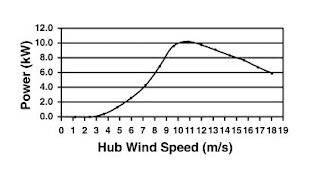Many people don't know "how is wind formed" on Earth. For those who are eager to learn, an explanation is given below.
Wind is formed by the indirect effect of the sun on the Earth’s surface. There is a reasonable explanation why is it so. As the sun shines, the Sun heats the Earth's surface; the air near ground level gets hot and rises up. Cold air at higher altitudes replaces it. At nighttime the process is reversed. This is in principal how is wind formed on Earth.
Vertical Wind Formation:
This process of hot air rising and colder air sinking, causes high and low air pressure areas and results in wind formation. The more the pressure changes in an area, the faster the wind speed will be. If two areas are close to each other, pressure difference will cause higher wind speed to be produced compared to areas that are far apart from each other. This is how the wind is formed on Earth and this phenomena is known as vertical wind formation.
How Wind is Formed During the Day and at Nighttime:
Wind is formed on Earth from the air motion. Air over land gets heated faster than air over water. When warm air over land rises, cold air over water replaces it. Land loses heat faster than water, during nighttime, the air above water cools faster than air above land. The same process happens again during nighttime but in reverse. This is how wind is formed on Earth during the nighttime. It is the reverse process of vertical wind formation of daytime.
Interestingly enough, most wind moves horizontally and not vertically, that is; wind moves along the Earth’s surface above the ground. This doesn’t contradict with what was stated earlier about hot air rising up and cold air sinking down as this process only causes two areas of different pressures that is responsible for wind and its motion. Usually, wind moving up and down happens during thunderstorm downdrafts. Vertical winds have low speed. Gravity has a lot of effect. It is the driving force that controls the vertical movement of air.
Then what makes wind travel horizontally rather than vertically?
There is another force that has significant affect on wind patterns. It is the earth’s rotation. Wind is deflected from being in a straight line just like all other flying things including birds and planes. Wind is usually deflected mostly near the Earth’s poles and least near the equator. The amount of air deflection is directly related to both the wind speed and its latitude. Therefore, slow winds are deflected only by a small amount, while stronger winds are much more deflected. This is how is wind formed horizontally.
Other Forces that Affect Wind Behavior:
There is another force that has significant affect on wind patterns. It is the earth’s rotation. Wind is deflected from being in a straight line just like all other flying things including birds and planes. Wind is usually deflected mostly near the Earth’s poles and least near the equator. The amount of air deflection is directly related to both the wind speed and its latitude. Therefore, slow winds are deflected only by a small amount, while stronger winds are much more deflected. This is how is wind formed horizontally.
Other Forces that Affect Wind Behavior:
There are other forces that affect the behavior of wind. Friction for instant influence to a large extent winds near ground level. Friction reduces wind speed near ground level and acts in the direction opposite to the wind direction. Therefore, it affects the flow of wind near ground. That is why most horizontal axis wind turbines are installed at high level above ground level and far away from urban cities.
The rotational force of the Earth has an effect on air speed. Air friction reduces air speed and the atmosphere adjusts by turning the wind from high pressure areas towards low pressure areas. Together the Earth’s rotational force, friction and the horizontal pressure gradient force, leads to a balanced system in the atmosphere with spiral wind motion instead of straight motion from high pressure areas to low pressure areas.
With winds directed from high pressure areas to low pressure areas and air that rises from low-pressure area, water reaches its condensation point in clouds. as a result storms and rain are formed in the atmosphere.
Formation of Jet Stream Wind on Earth:
Also, a change in temperature has direct affect on pressure. With large change in temperature wind gets generated. An area in the atmosphere is created with higher winds, it is known as jet stream areas. These jet streams travel across continents due to the differences between warm and cold air areas in the atmosphere. These atmospheric winds are responsible for moving storms from West to East. Jet streams have a great benefit in driving wind turbines that generates power at selected locations.
Does the information provided above answers "How the Wind is Formed on Earth?" If not, post your question in the comment section below.
Also, a change in temperature has direct affect on pressure. With large change in temperature wind gets generated. An area in the atmosphere is created with higher winds, it is known as jet stream areas. These jet streams travel across continents due to the differences between warm and cold air areas in the atmosphere. These atmospheric winds are responsible for moving storms from West to East. Jet streams have a great benefit in driving wind turbines that generates power at selected locations.
Does the information provided above answers "How the Wind is Formed on Earth?" If not, post your question in the comment section below.






